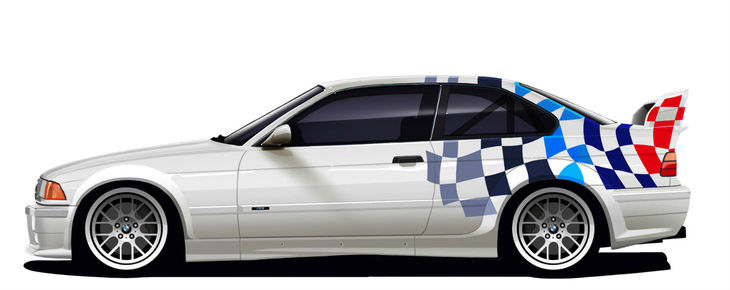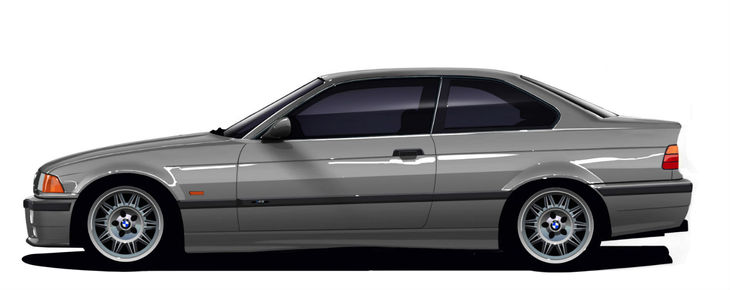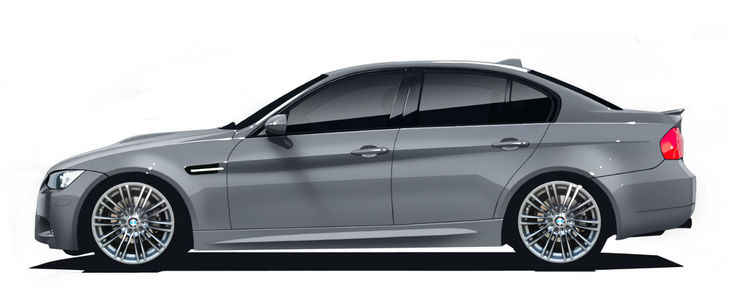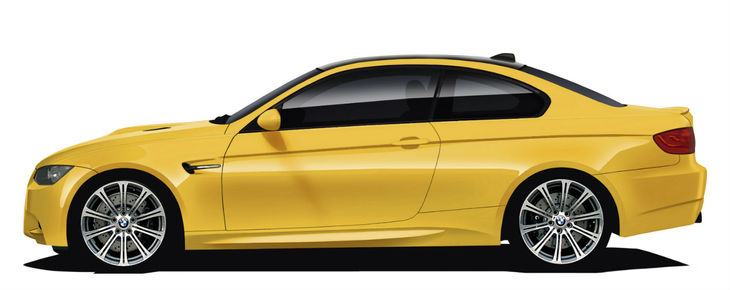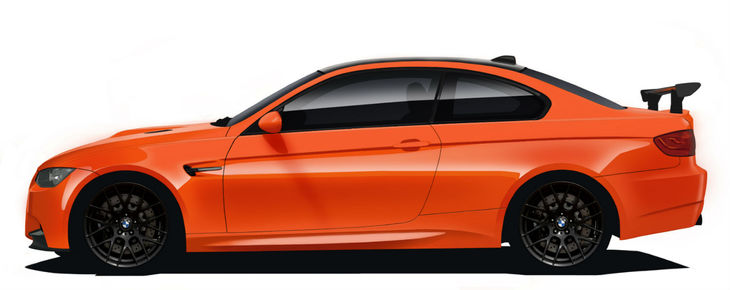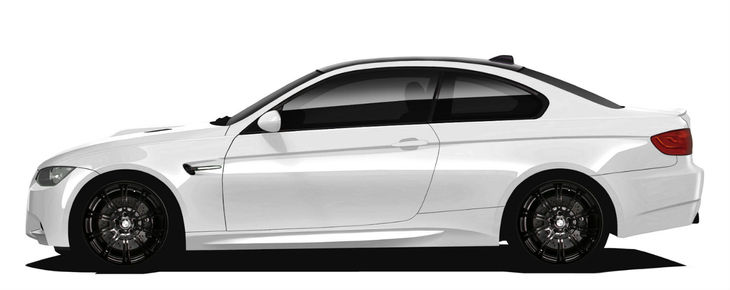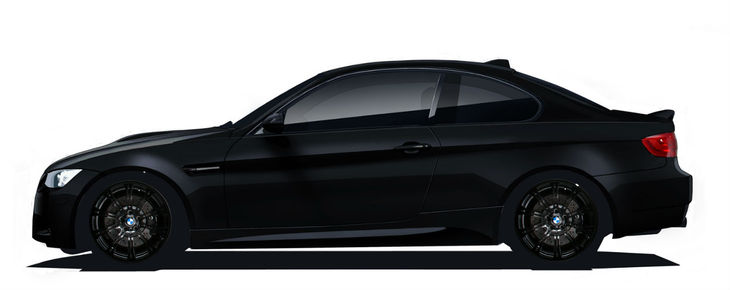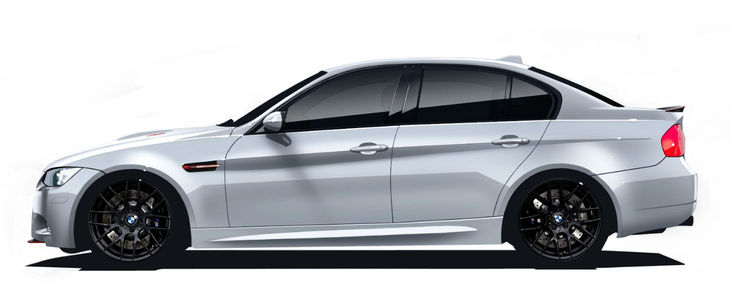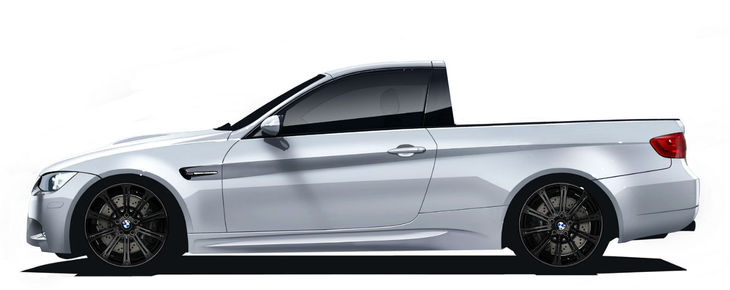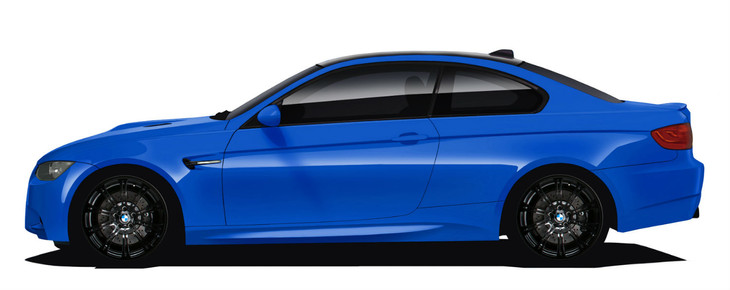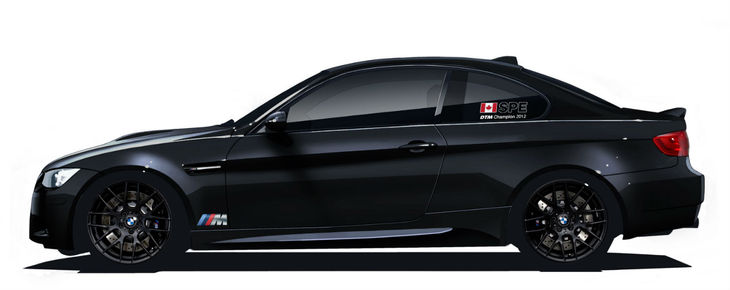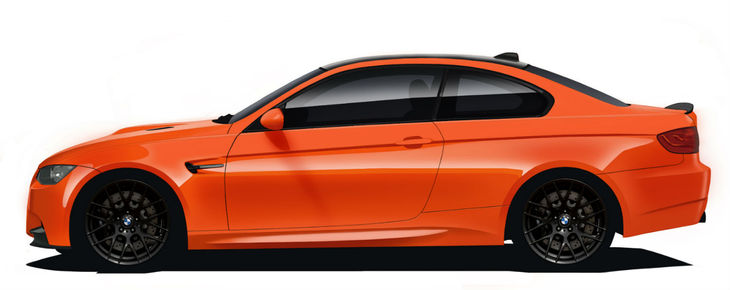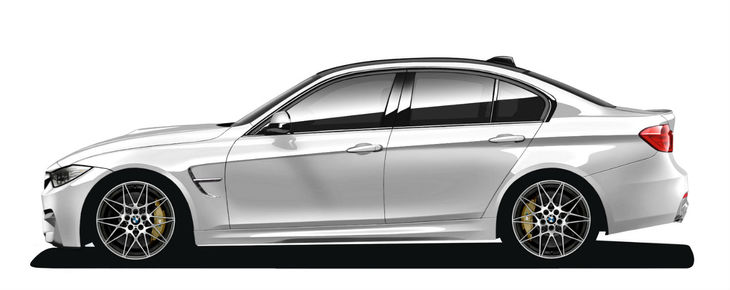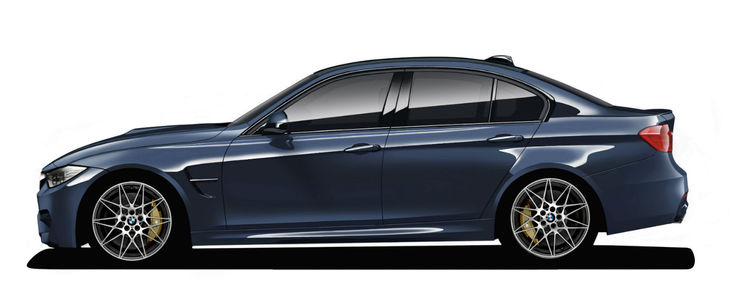The BMW M3 celebrated its 30th anniversary in 2016. To celebrate, we created an A1-sized artwork that has since become one of our top-sellers. Let's take a closer look at the evolution of an icon. Which is your favourite? Let us know in the comments section below.
It is not often that a single product ends up creating and defining a segment in the way that the BMW M3 has. And yet, it is often forgotten that the original M3 was never developed to be just a fast variant of the 3 Series.
No, the M3 was developed to compete in the Group A series in Germany and participating required 5 000 road-legal cars to be sold within 12 months. This is what drove the development of the original E30-generation car, and embued it and its successors with a unique character and racing spirit, that has been core of BMW's iconic sportscar's since the first day.

Before we look at the individual derivatives in some detail (the detailed profile images were produced exclusively for Cars.co.za), it may be of interest to review how the recent M3 shapes up compared with the original in terms of some key metrics:
- Top Speed: From 235 kph (original E30 M3 coupe) to 280 kph (delimited F80 model). Increase of 19%
- Power: Up from 147 kW (original E30 M3 coupe, no cat) to 331 kW (current F80 Competition Pack/30 Jahre). Increase of 125%
- Torque: Up from 230 Nm (original E30 M3 coupe) to 550 Nm (current F80 Competition Pack/30 Jahre). Increase of 139%
- Weight: Up from 1 200 kg (original E30 M3 coupe) to 1 535 kg (current F80 Competion Pack/30 Yahre). Increase of 28%
- 0-100 kph acceleration: Down from 6.7 sec (original E30 Coupe), to 4.0 sec (current F80 Competition Pack/30 Yahre). Improvement of 40%
Arrival of the 1st generation (E30) : 1986–1991
1986 BMW (E30) M3
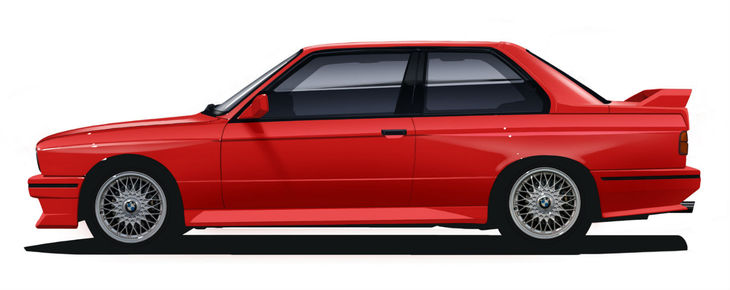
The original M3 used the underpinnings of the company's E30-generation 3 Series, but for racing purposes it went onto a weight-saving diet and also featured a number of small aerodynamic tweaks, particularly around the C-pillars. Its trademark flared wheel arches were necessary to accomodate the wider tyres required for racing.
The engine, a lightweight, high-revving 2.3-litre 4-cylinder from the 3 Series line-up, was chosen as the base, but was modified to utilise a 4-valve set-up. It produced a peak power output of 147 kW (143 kW with a catalytic converter), enough for a 0-100 kph sprint time of 6.7 seconds and a 235-kph top speed. It weighed around 1 200 kg. During its time in production, several special editions were built, including the Europa Meister 88, Johnny Cecotto and Roberto Ravaglia versions.
The original E30 M3 was never officially sold in South Africa, due to it only being available in left-hand drive. BMW South Africa developed its hot 333i and, subsequently, 325iS Evo I and Evo II homologation specials instead.
1986 BMW (E30) M3 Pick-Up

This oddity was the idea of passionate M Division factory workers, who converted a 3 Series Convertible body and equipped it with M3 internals, for use around the production facility. The convertible shell was used because it happened to be available at the factory, and secondly because of its built-in bracing, which made it ideal for the pick-up conversion.
Because it was based on the standard 3 Series Convertible, it didn't have the M3 Coupe's flared wings, and at first it used the so-called "Italian M3" engine. This meant fitment of a 2.0-litre engine with lower power, but it was later replaced with the M3's proper 2.3-litre powertrain. With an estimated top speed of 200 kph and a 0-100 kph sprint time of around 7 seconds, this "workhorse" would still give some hot hatches a scare today! The one-off M3 pick-up faithfully served in the factory for more than 26 years!
1988 BMW (E30) Convertible

Two years after the debut of the Coupe came the convertible version, powered by the same engine. It was a bit heavier (1 360 kg), so performance suffered a little, with the 0-100 kph sprint being completed in 7.3 seconds.
1988 BMW (E30) M3 Evolution Coupe
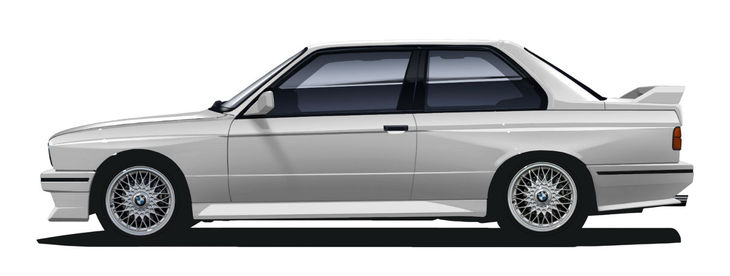
Also called the Evo2 by some (and not be confused with the Evo1, which was seen as just a slight variation on the standard car), the introduction of this model saw an uptick in power and torque (to around 162 kW/245 Nm) and some visual changes, including larger (16-inch) wheels, thinner glass and some other weight-saving measures. It also received a deeper front spoiler/splitter and an additional rear spoiler.
1988 BMW (E30) M3 Evolution Convertible
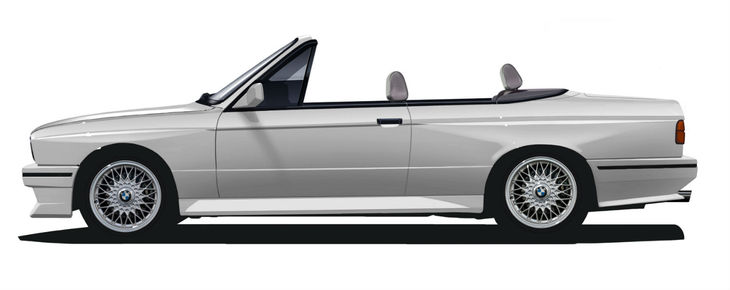
The changes made to the Coupe were also carried over to the sexy convertible model in 1988.
1990 BMW (E30) M3 Sport Evolution
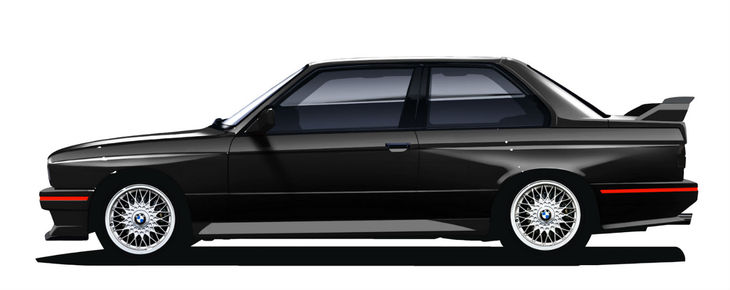
Nearing the end of its model life, the "ultimate" M3 was unleashed in 1990, featuring significant upgrades. Under the bonnet was a 2.5-litre engine that delivered 175 kW, which improved the 0-100 kph sprint capability to 6.5 seconds and raised the top speed to 248 kph. Only 600 of these Sport Evolution M3 Coupes were made, with other enhancements in the shapes of an adjustable front spoiler/splitter and front brake cooling ducts (the latter at the cost of fog lamps).
1990 BMW (E30) M3 Sport Evolution Convertible
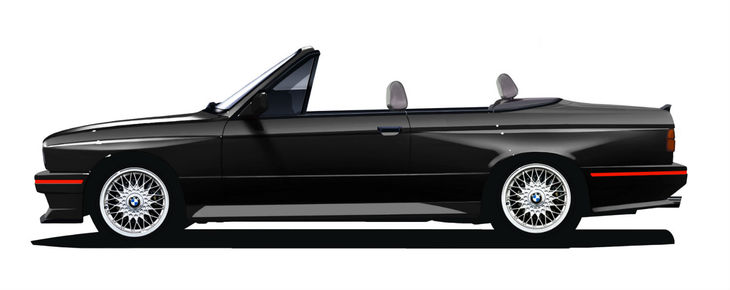
As the E30 M3's last hurrah, a single convertible version of the Sport Evolution was built.
Arrival of the 2nd generation (E36) : 1992–1999
1992 BMW (E36) M3 Coupe
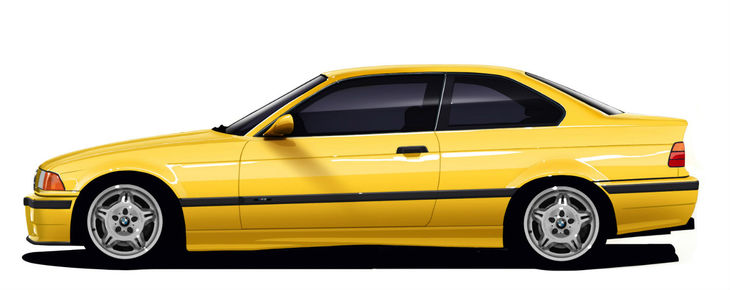
The E36-generation M3 arrived in 1992 and was initially only offered in the coupe body shape. It featured a vocal 3.0-litre straight-6 cylinder engine (S50) that delivered a strong 210 kW and 320 Nm of torque, both output figures being significantly higher than its predecessor, but then it was also about 200 kg heavier than its forebear.
Using a 5-speed manual transmission, the E36 M3 was widely regarded as one of the best handling and most entertaining cars of its generation, and it was also sizzlingly fast, with a 0-100 kph time of 6.0 seconds. It was not only the first M3 to be officially sold in South Africa, it was also assembled here using CKD kits.
South African-made cars featured a slightly different engine set-up devoid of emissions controls and the ability to run on leaded fuel. Our standard specification was also slightly more generous compared with European-spec cars. When it was launched, the E36 M3 set to 2 world records – for the highest output per litre and the highest specific torque from a volume-produced, naturally-aspirated engine.
1994 BMW (E36) M3 Convertible
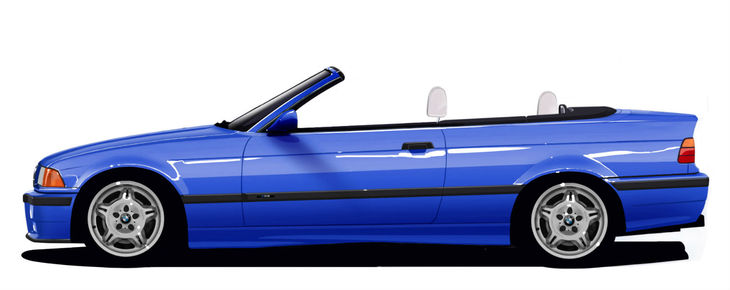
Two years after the introduction of the Coupe, BMW unleashed the M3 Convertible featuring the same drivetrain. Due to the fitment of the soft-top folding roof, however, it was about 100 kg heavier, so acceleration suffered slightly (6.2 sec to 100 kph).
1994 BMW (E36) M3 Sedan 
The first M3 sedan arrived in 1994 as BMW attempted to plug a high-performance sedan gap in its line-up. The E34 M5 had come to the end of its lifecycle, and the E39 M5 only launched in 1998. It used the same 3.0-litre straight-6, delivered the same power as the Coupe, and provided similar performance.
1994 BMW (E36) M3 GTR
The M3 GTR is essentially just a road-legal version of the racing car that BMW entered into the 1994 German GT Cup Touring Car series. As is usually the case with racing cars, the interior was stripped out and lightweight body panels adapted to cut overall weight to around 1 300 kg. It also had wider rear fenders to accommodate 18-inch wheels, adjustable front and rear spoilers and power was rated at just over 220 kW. Only 2 such road-legal M3 GTRs were built.
1994 BMW (E36) M3 Euro-Spec Canada
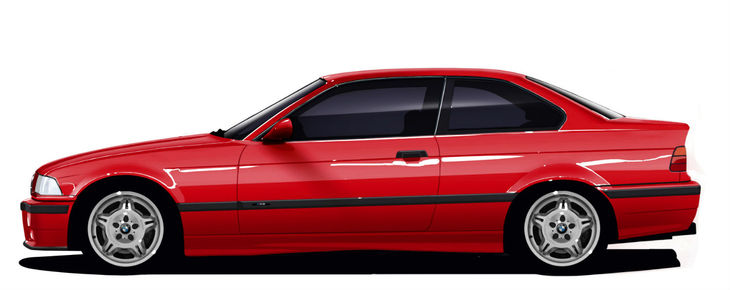
With a run of only 45 cars, this is one of the rarest E36-generation M3s of all... Its birth was the result of the delayed introduction of a more affordable M3 for the American market, but a loophole in market rules allowed BMW Canada to import European-specification cars in 1994. So, 45 such cars were ordered and specially built for the Canadian market and snapped up within 3 days, even at a heady asking price. The cars were powered by the European-spec engine (210 kW/320 Nm) and featured ventilated brakes with floating rotors. Each car featured a plaque with an engraved number.
1994 BMW (E36) M3 R
Arguably the rarest and most powerful production E36 ever, this was a limited edition special produced for BMW Australia to race in the Super Production Series. Only 15 were made, with final preparation handled by the Frank Gardner team. Four of the cars were reserved for the racing series, while only 11 were sold to the public. You could only buy an M3 R if you were in possession of a CAMS license.
The engine in the M3 R delivered near 240 kW, resulting in a 0-100 kph sprint time of 5.4 seconds and with the electronic speed limiter removed, it would touch 275 kph. Among other race-optimising changes, the M3 R received King springs fitted to Group N adjustable struts, an AP Racing twin-plate clutch, 4-piston brake calipers, AC Schnitzer cams, M5 drive shaft and a cold air snorkel that replaced the left-hand front fog lamp.
As befits its "developed for racing" theme, the M3 R was stripped of most of its luxuries (including the rear seat) and featured aggressive aerodynamic add-ons. An FIA-approved roll-cage was available as an option.
1995 BMW (E36) M3 Coupe North America
The E36 M3 only arrived in the United States as a 1995 model and initially featured the S50B30US engine that delivered 179 kW and 305 Nm of torque, considerably less than the European-spec cars. Nevertheless, it still managed to get to the benchmark sprint mark (0-60 mph) in 6.0 seconds and also featured a slightly different suspension set-up. A 5-speed automatic transmission was offered in the 'States.
1995 BMW (E36) M3 Lightweight
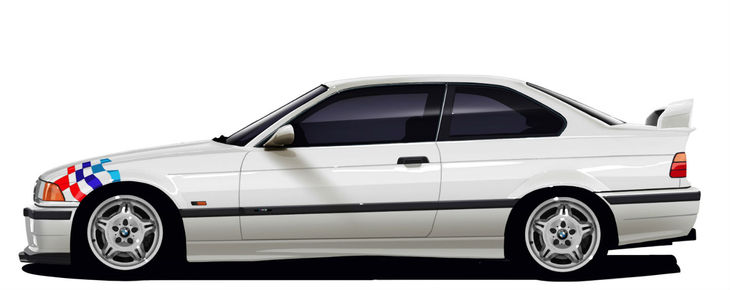
Weighing in at around 90 kg less than its standard Coupe sibling, the limited-edition M3 Lightweight featured the same outputs as the E36 M3 GT (217 kW and 323 Nm). Essentially built for racing homologation purposes (to compete against the Porsche 911 in America), these cars were stripped of a number of luxuries, including radio, aircon, sunroof etc. Even the carpeting was thinner and the doors had aluminium skins. The top-speed limiter was removed, shorter springs fitted and a different rear axle ratio was implemented. The Lightweight had unique forged 17-inch alloy wheels and wider rear tyres.
Once assembly was completed, the cars were sent to Prototype Technology Group (PTG) Racing in Virginia where a special "trunk kit" was added. This kit comprised of a different oil pan with a special oil pump with dual pickups, front strut bar, lower cross-brace, spacer blocks to raise the rear wing and even an adjustable front splitter. Once fitted, the items in the "trunk kit" voided the new car warranty.
Between 100 and 125 Lightweights were built.
1995 BMW (E36) M3 GT
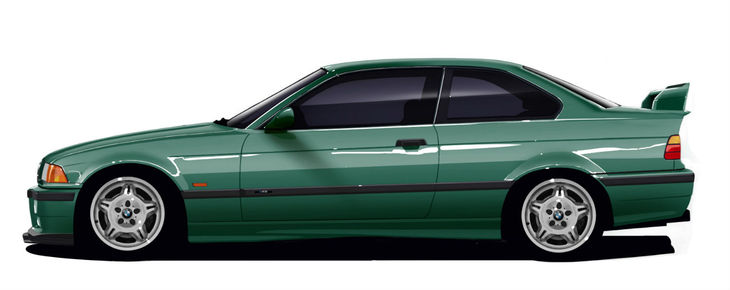
One of the rarer E36 M3 derivatives was the limited-edition (356 built) GT. Produced as a racing homologation special (for the FIA-GT class II, IMSA GT and International long-distance racing) using the Coupe body, it was only ever painted in British Racing Green. It featured a slightly more powerful engine (217 kW) with a higher compression ratio, motorsport oil pump and special VANOS software, among other smaller engine tweaks. Visually it received a more pronounced, adjustable front splitter/spoiler, higher rear wing and the door skins were in aluminium. It was 30 kg lighter than the standard car and had its top speed limiter removed (could touch 275 kph).
1995 BMW (E36) M3 Coupe
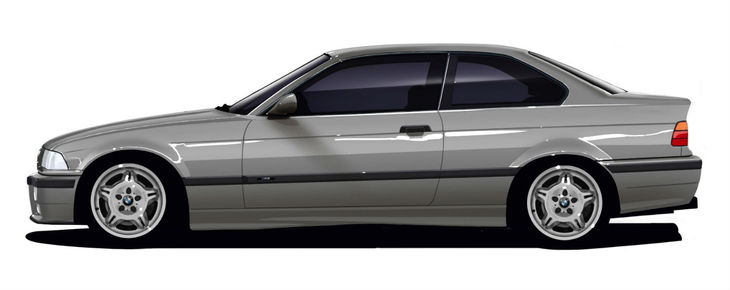
The M3's mid-life facelift happened in late 1995 when all models (barring the Convertible) received a range of visual and mechanical upgrades. Under the bonnet was the S50B32 3.2-litre engine that delivered 236 kW and 350 Nm of torque, enough of a bump to cut the 0-100 kph sprint time to 5.5 seconds. For the first time, a 6-speed manual transmission was standard fitment, and the 6-speed SMG also debuted). Visually, the upgraded M3 could be identified by its clear indicator lenses. The convertible model received these changes only in early 1996.
1996 BMW (E36) M3 Compact
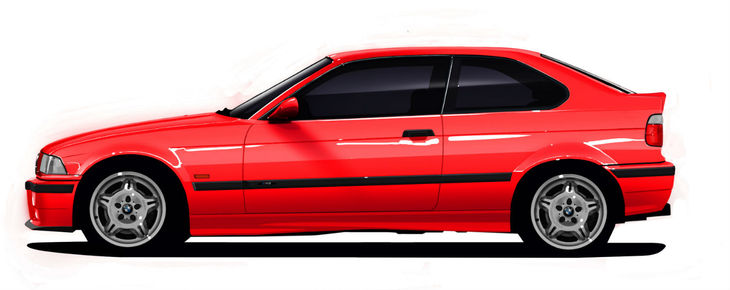
Here's a real oddball! Said to have been built to celebrate the 50th anniversary of the leading German motoring magazine, Auto Motor und Sport, in 1996, was a E36 Compact version of the M3, which the magazine road tested for its June issue. The first-generation Compact was never sold in South Africa so it may be difficult to visualise such a thing as an M3 Compact, but BMW essentially shoehorned the mechanicals (and much of the cabin design) into the Compact's body, resulting in what must have been quite the fiery little hot hatch, given the fact that it was significantly lighter (150 kg) than its Coupe, Sedan or Convertible siblings.
1998 BMW (E36) M3 Evolution Imola
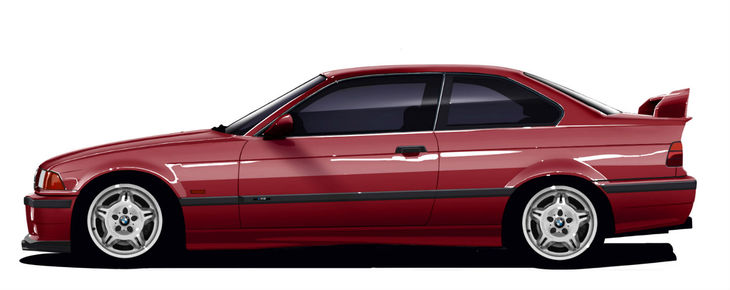
Also sometimes called the M3 GT2, only 200 units of the M3 Evolution Imola were built and all of them were finished in Imola red. The "red" theme continued inside on the seats. It was powered by the same engine as the facelifted European-spec M3, but did receive the so-called Class II rear spoiler and front corner splitter aerodynamic extras. Electric seats, side airbags and double-spoke polished alloy wheels were part of the package too.
Arrival of the 3rd generation (E46) : 2000–2006
2000 BMW (E46) M3 Coupe
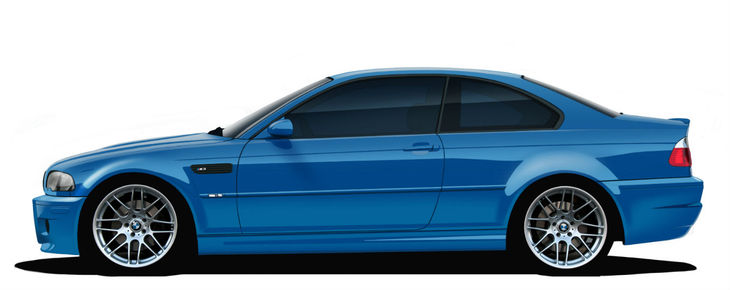
Arriving with much fanfare and to critical acclaim in 2000 was the E46-generation of the M3. Under the bonnet was the charismatic new 252 kW/365 Nm 3.2-litre S54M engine, coupled with either a 6-speed manual Getrag transmission or the automated SMG system (with steering-mounted paddles). With a redline of 8 000 rpm and a stirring engine note, the E46 M3 quickly became an iconic machine. It could blast to 100 kph in 5.2 seconds and was electronically limited to 250 kph.
2000 BMW (E46) M3 Touring
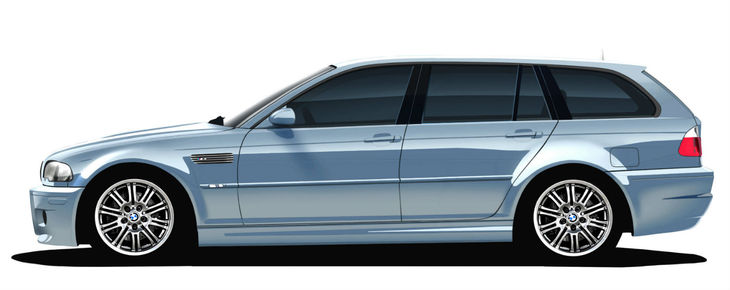
Strongly considered as an additional M3 derivative was a station wagon (Touring) version. If it was given the green light for production, it would've entered into battle with the B5-generation Audi RS4 Avant. Sadly, it never received the go-ahead and only one prototype was built.
2001 BMW (E46) M3 Convertible
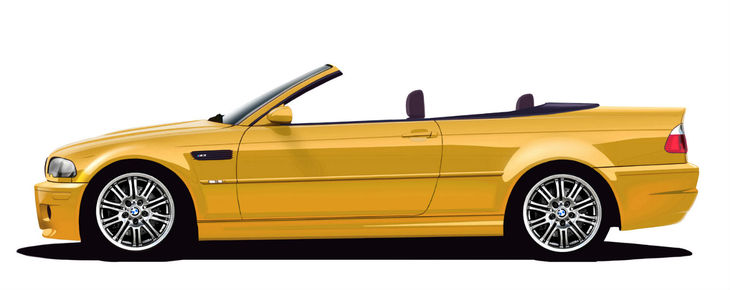
In the absence of a sedan derivative of the E46 M3 and the Touring version being stillborn, the Convertible was the only other body style on offer. It was around 100 kg heavier than the coupe, and consequently, its 0-100 kph time was affected, with the benchmark sprint completed in a claimed 5.5 seconds.
2002 BMW (E46) M3 GTR
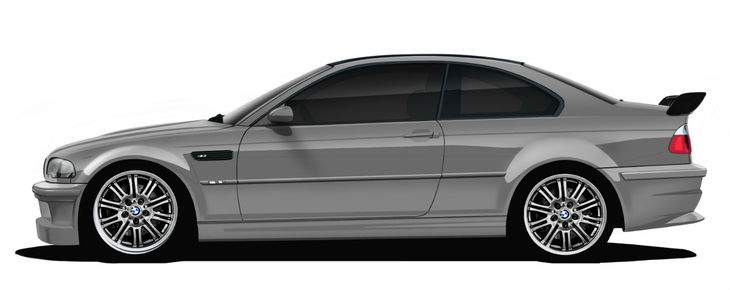
A precursor to the E90-generation M3, the E46 M3 GTR featured a 4.0-litre V8 (P60B40) engine producing 368 kW. It was developed to compete in ALMS (American Le Mans Series), which it did successfully, but a rule change forced BMW to build and sell 10 road going GTRs to the public. It is said that only 3 were ultimately built and that they all now reside in the BMW M Division's collection. Either way, the next year the rules changed again, demanding that 100 cars and 1 000 engines had to be built. This was too much for BMW, so it pulled out of ALMS.
2003 BMW (E46) M3 CSL
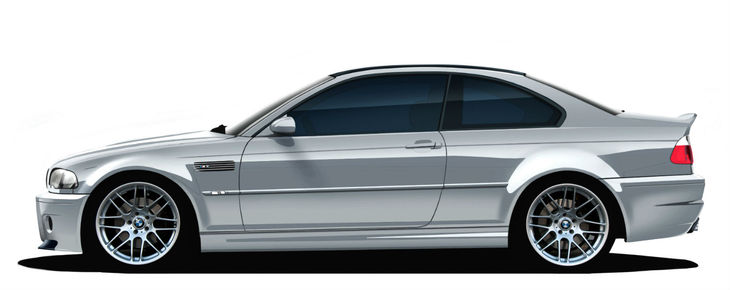
The E46 M3 CSL (for Coupe Sport Lightweight) is one of the most desirable M3 models – of any generation – and just short of 1 400 units were built. It featured a number of weight-reducing components (including a carbon fibre-reinforced roof panel) and a plethora of cosmetic, drivetrain and suspension modifications. Even the rear glass was thinner to eke out every little bit of weight saving possible. Overall, the CSL was about 160 kg lighter than the standard car.
The CSL's engine was fettled too and benefited from a different air intake system with larger manifolds, modified camshafts and exhaust valves, and a lightweight exhaust system. Power went up to 265 kW and the 0-100 kph sprint time was reduced to 4.9 seconds. The CSL was only offered with the SMG II transmission that featured a launch control mode. The removal of the top speed limiter was an option offered by the factory.
2004 BMW (E46) M3 Silverstone
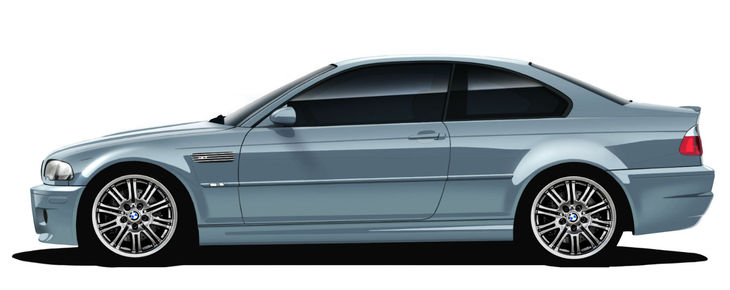
Although the M3 Silverstone featured no performance-altering modifications, it was a notable special derivative as 50 examples were produced exclusively for the UK market during 2004. The 50 cars (30 manual, 20 with SMG II) all were painted in Silverstone metallic and had dark Estoril Blue extended Nappa leather interiors.
2005 BMW (E46) M3 CS
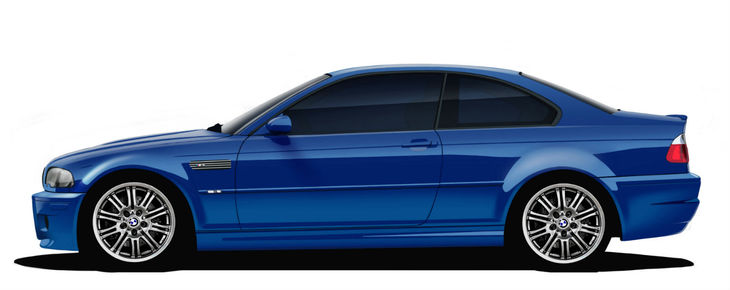
The E46 M3's final swan song was the CS, officially given this labelling only for the right-hand drive UK market. It is, however, essentially the same car as the left-hand drive "ZCP" coded model, and featured the Competition Package as standard (275 of the so-called M3 CS derivatives were made for the UK).
The Competition Package included the following items: cross-drilled brake rotors (13.7 inches at the front) with 2-piece compound rotors; reduced steering ratio; M Track Mode setting for DSC; 19-inch cross-spoke alloy wheels; Alcantara-wrapped 3-spoke steering wheel with the M Track Mode button; milled aluminium effect interior trim; Interlagos Blue metallic paint.
Arrival of the 4th generation (E90, E92, E93): 2007–2013
2007 BMW (E90) M3 Sedan
The E90-generation heralded the introduction of a high-revving 4.0-litre V8 engine (S65 B40) for the M3, a powerplant that developed no less than 309 kW and 400 Nm of torque. This gave the M3 blistering performance, with a claimed 0-100 kph time of 4.9 seconds. It was offered with either a 6-speed manual transmission or a 7-speed M-DCT (dual clutch transmission). Although the E9x-generation M3s were heavier than their forebears, they did employ a lot of weight-saving items, including a carbon fibre-reinforced plastic (CFRP) roof and a front axle made almost entirely from aluminium.
2007 BMW (E92) M3 Coupe
Like its sedan sibling, the Coupe version used the new V8 engine (said to be a truncated version of the E60 M5's 5.0-litre V10) to great effect and was even fractionally faster (0-100 kph in 4.8 seconds). Like its sedan and convertible counterparts, the Coupe had the M Variable Differential (that directs more power to the wheel with greatest traction), MDrive button (that allows driver to store and call up his/her favourite dynamic settings), and Power button (that alters throttle response).
2008 BMW (E93) M3 Convertible
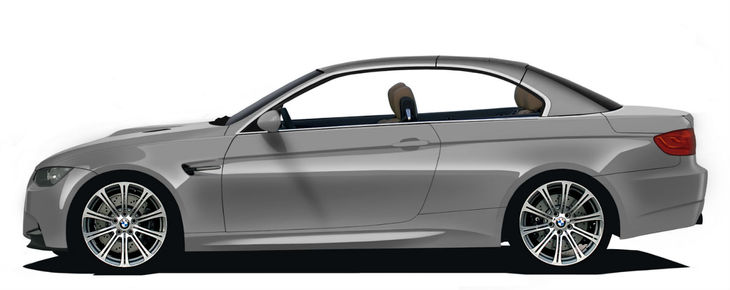
For the first time the M3 Convertible featured a folding hard-top, as was the fashion at the time. Unfortunately, the hardtop and its folding mechanism added around 200 kg of ballast to the car, so performance suffered.
2009 BMW (E92) M3 GTS
This spicy number was a limited production run of around 140 units (coupe only) that offered more power and less weight than the standard car. It emerged from the factory complete with a roll-cage in place of the rear seats. It also featured a larger (4.4-litre) engine and a lightweight exhaust system with titanium silencers.
Power went up to 331 kW and torque to 440 Nm. It scorched to 100 kph in 4.4 seconds and would only run out of puff at 305 kph. It was offered only with the 7-speed M-DCT transmission with unique software and increased oil capacity. Of course, the brakes and wheels were upgraded too, but the big news under the skin was the upgrade to a true coil-over suspension set-up with double-adjustable shock absorbers.
2009 BMW (E92) M3 Edition
In some markets, such as Russia and Italy, the M3 Edition was known as the "Black & White edition" in reference to its trademark colour scheme, although BMW offered the car in 5 different paint colours. There was only one small mechanical change compared with the standard car – it had shorter (by 10 mm) springs. A total of 707 M3 Editions were manufactured.
2010 BMW (E92) M3 Frozen Edition
The M3 Frozen Edition, wasn't a unique product to the South African market, as some still believe, but what is true is that the Frozen Edition sold in South Africa was a little more special than those in the rest of the world. Easily identified courtesy of its matte black finish and black wheels, the SA-market Frozen Edition included AC Schnitzer software, air intake and exhaust system as standard, giving it a very memorable sound. With 330 kW and 420 Nm of torque, the M3 Frozen Edition was a scorcher, punching to 100 kph in 4.5 seconds and on towards 290 kph.
2011 BMW (E92) M3 Competition Edition
Fitted as standard with the M-DCT transmission and the Competition Package, the so-called Competition Edition had a long production run but only 385 were ever made, with most of them painted in the Frozen Silver metallic colour. In the UK this model was known as the M3 Frozen Silver Edition. There were no drivetrain upgrades.
2011 BMW (E90) M3 CRT
This is quite a special version and, sadly, one that never came to South Africa. The CRT used the drivetrain and chassis of the track-focused M3 GTS coupe and was reportedly built to show off BMW's expertise in manufacturing Carbon Fibre Reinforced Plastic (CFRP).
Using left-over CFRP pieces from the i3/i8 projects, BMW fashioned a number of items from this material, including the bonnet, front seats etc. Overall, around 45 kg was saved and yet the M3 CRT's standard specification was considered quite generous (automatic climate control, navigation etc.). It did, however, have 2 individual rear seats rather than a bench.
BMW made 67 M3 CRTs, all in the same trim, with only 5 of those being in right-hand drive form.
2011 BMW (E92) M3 Pick-Up
For the second time in the M3's history, BMW built a pickup version. Based on the body of the convertible model, the pickup was used to good effect as an April Fool's joke on the world's motoring press. BMW even released images of the pickup pounding the Nurburgring Nordschleife and boasted about a 450 kg payload. The truth, however, was that the original E30 M3 pickup had to be retired, and this E90 pickup was to be pushed into service around the M Division factory. This time, however, it was also licensed for road use.
2012 BMW (E92) M3 Limited Edition 500
The Limited Edition 500 was built for the UK market and available in coupe and convertible body styles. As the name suggests, only 500 examples of the car were built. It offered no extra power or enhanced dynamic ability, with the focus instead being on offering extra equipment. It was available in 3 colours: Imola Red, Mineral White and Santorini Blue, the colours of the M Division. All models featured the so-called Shadowline exterior trim and black alloy wheels.
2013 BMW (E92) M3 DTM Champion Edition
To celebrate its triumphant return to DTM racing in 2012, BMW built 54 examples of this DTM Champion Edition, all equipped with the M-DCT transmission and Competition Package. Frozen Black metallic was the colour of choice, with generous use of the M tri-colour strip. It also featured the Canadian flag and the letters SPE on the rear side windows, in reference to Canadian Bruno Spengler, who was the champion driver. There were no drivetrain changes.
2013 BMW (E92) M3 Lime Rock Park Edition
The Lime Rock Park Edition was a US-only derivative with a production run of only 200 cars, all painted in Fire Orange. It featured various carbon fibre bits, including the front splitter and rear spoiler, ran a lowered ride height and had the competition package fitted as standard. You could have it with either a 6-speed manual 'box or the M-DCT dual-clutch, and while there were no changes to the engine, the ECU software was different to create less noticeable interference from the DSC and traction control systems. It could also run all the way to its top-end of 300 kph.
Arrival of the 5th generation (F80)
2014 BMW (F80) M3 Sedan
Arriving in 2014, the F80 generation car heralded quite a big shift in BMW's naming policies. For the first time, there was no M3 Coupe (rebadged M4), and the M3 badge would only be applied to the muscular sedan version. The Convertible, based on the Coupe, also received the M4 moniker.
The F80 also saw a return to a free-revving 3.0-litre straight-6 engine, but this time with M TwinPower turbo technology. Power went up to 317 kW and torque to 550 Nm. The 6-speed manual transmission was still offered, along with the more popular M-DCT 7-speed dual-clutch. The use of lightweight components resulted in an overall mass about 80 kg lower than its predecessor. The M3 blitzed the 100 kph sprint in 4.3 seconds (manual) or 4.1 seconds (M-DCT).
2015 BMW (F80) M3 Competition Pack
The highly acclaimed M3 Competition Pack introduced new springs, dampers and anti-roll bars to supplement the Adaptive M suspension. There were also modifications to the differential and DSC system to further heighten the dynamic (entertainment) capabilities of the vehicle. Visually, the car featured several changes compared with the standard M3, including the M Sports exhaust with black chrome tailpipes and the Shadow Line exterior trim. Most importantly, power was upped to 331 kW, cutting the 0-100 kph time by 0.1 seconds.
2016 BMW (F80) M3 30 Jahre Special Edition
In celebration of the M3's 30th anniversary, BMW introduced the limited-edition 30 Jahre in 2016. Only 500 units were built and 30 allocated to South Africa. It featured the Competition Pack upgrades (including 331 kW power boost) as standard, as well as Macao Blue metallic exterior paint finish, an original M3 colour.
Sources: BMW Press, BMW Registry, Wikipedia, Cars.co.za

